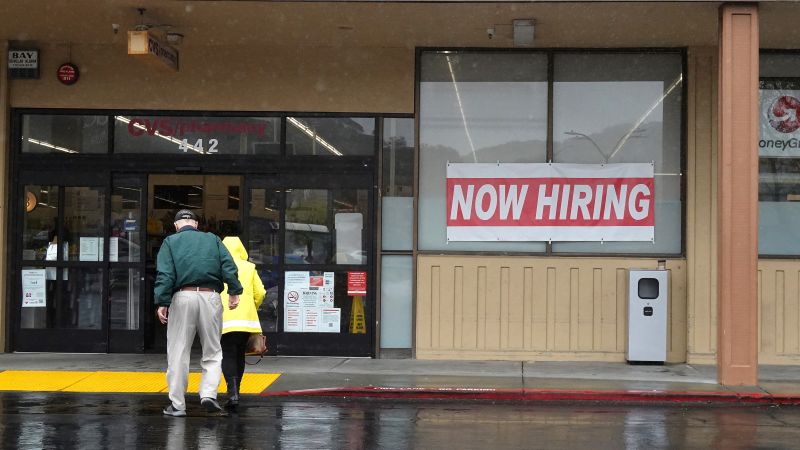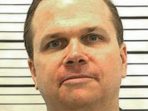Minneapolis
CNN
—
If the latest employment trends continue and economists’ forecasts prove true, Friday’s jobs report could bring back that pre-pandemic feeling.
Economists expect the US economy to have added 180,000 jobs in April, according to consensus estimates on Refinitiv. Excluding the losses during the first year of the pandemic, that would be the smallest monthly gain since December 2019.
It could also hammer home the fact that the US labor market has indeed cooled down from its red-hot recovery over the past two years.
Earlier this week, the latest labor turnover report from the Bureau of Labor Statistics — the Job Openings and Labor Turnover Survey (JOLTS) for March — showed that job openings declined, hiring was flat, quits trended down and layoffs spiked.
“JOLTS is now really pointing in the similar direction as other labor market data: That the labor market is cooling off,” said Nick Bunker, economic research director at the Indeed Hiring Lab, the economic data insight and analysis arm of job website Indeed.
The moderation, which is expected to continue, is the desired and logical outcome of the Federal Reserve’s inflation-fighting barrage of 10 consecutive interest rate hikes. However, it’s unclear how much of a slowing may occur, Bunker said.
“Something that starts as a cooldown can turn into a downturn pretty quickly,” he cautioned.
Economists are expecting the unemployment rate to tick up to 3.6% from 3.5%, according to Refinitiv. Even so, that jobless rate would still be hovering around a historically low range.
To try to glean whether a downswing is turning into a downturn, Bunker said he plans to dig into the unemployment rate, specifically the labor force flows and reasons for unemployment.
“If more people are job losers [than leaving voluntarily], that’s concerning,” Bunker said.
The labor force participation rate continued to climb in March, landing at 62.6%, which matches a pandemic-era high. However, that figure remains below the February 2020 rate of 63.3%.
However, layoff announcements continue to accumulate.
US employers announced 66,995 job cuts last month, bringing the January-April total to 337,411, according to a report released Thursday by outplacement and executive coaching firm Challenger, Gray & Christmas. Outside of 2020, it’s the highest year-to-date total since 2009, according to the report.
The largest share of the cuts occurred at retailers, who slashed 14,689 jobs.
“Retailers and consumer goods manufacturers are preparing for a tightening in consumer spending, particularly with the Fed’s hike to interest rates in an attempt to control inflation,” Andrew Challenger, senior vice president of Challenger, Gray & Christmas said in a statement.
Inflation-adjusted consumer spending was flat in March, marking the fourth time in five months that expenditures held steady or declined, according to Commerce Department data released last week.
Consumers are “retrenching,” Tim Quinlan, a Wells Fargo economist told CNN. But it’s not clear yet how much further consumer spending could drop as a result of not only persistently high prices and increasing interest rates but also tighter lending conditions that result from broader banking turmoil, EY economist Gregory Daco noted.
Payroll processor ADP’s monthly look at private-sector employment activity, released two days before the BLS’ employment report, is sometimes looked at as a preview of what to expect from the federal data.
If the April ADP report is any indication, then economists and the markets are in for a surprise. Private-sector employers added 296,000 jobs in April, crushing economists’ expectations for a gain of 148,000 and more than doubling the prior month’s tally of 142,000, according to the ADP National Employment report released Wednesday.
ADP’s tabulations don’t always directly correlate with the official federal report — BLS’ January private-sector payroll gains were three times that of ADP’s.
“ADP hasn’t been too reliable in predicting first prints of BLS payrolls recently, and whereas yesterday’s JOLTS figures pointed to some downside risk for Friday’s nonfarm payroll report, today’s ADP number argues for upside risk,” Michael Feroli, JPMorgan’s chief economist, said in a note on Wednesday.
A separate private-sector indicator, which will be updated on Friday, shows that “the smallest of small businesses,” those with between one and nine employees, are continuing to shed workers.
In March, when overall hiring activity resulted in a net gain in payrolls nationwide, small businesses with nine or fewer employees saw a net loss of 39,600 jobs, according to the Intuit QuickBooks Small Business Index, which is produced by Intuit QuickBooks and an academic team led by Ufuk Ackigit, an economics professor at the University of Chicago.
“Our index shows that the small business employment activity is back to pre-pandemic level,” Ackigit told CNN. “So if it continues to decline this way, we will be in a worse situation relative to pre-pandemic, which is really alarming.”
Fed Chair Jerome Powell can be counted as still in the soft landing camp, and the US labor market’s continued resiliency is a big reason why.
“We’ve raised rates by 5 percentage points in 14 months, and the unemployment rate is 3.5%, pretty much where it was or even lower than it was when we started,” Powell said on Wednesday at a news conference following the conclusion of the central bank’s two-day monetary policy meeting.
Job openings remain high — JOLTS showed there were 1.6 available jobs for every job seeker — and there are indications of gradual cooling in the labor market, he said.
It wasn’t supposed to be possible for job openings to decline as much as they’ve declined without unemployment going up, Powell said.
“It’s possible that we can continue to have a cooling in the labor market without having the big increases in unemployment that have gone with many prior episodes,” he said. “And that would be against history. I fully appreciate that would be against the pattern.”
He added: “It’s still possible that the case of avoiding a recession is, in my view, more likely than that of having a recession. The case of having a recession, I don’t rule that out either: It’s possible that we will have what I hope would be a mild recession.”
Sumber: www.cnn.com




